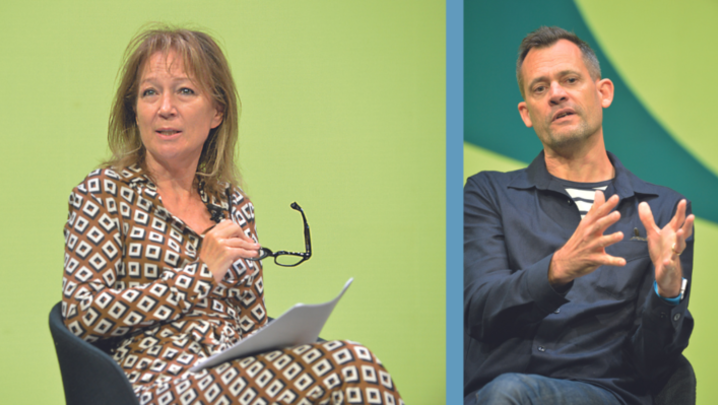Jakob Nielsen, CEO of GroupM’s addressable advertising company, Finecast, explains to Steve Clarke how TV ads can now be sold at postcode level
London’s Red Lion Square is a place often associated with political revolution. But a few steps away from Conway Hall, home of meetings for radicals and disruptors since the 1920s, is the gleaming modernist UK HQ of global advertising giant GroupM. There, a very different kind of revolution is being conceived.
In September, GroupM officially launched Finecast, an addressable TV service that offers British broadcasters and other UK-based content platforms the ability to provide targeted advertising via a single access point and using a common data currency.
As TV companies continue to assess the threat to their advertising businesses from Google and Facebook, advertising aimed at individual households, rather than broad demographics, is looking increasingly attractive.
This point was illustrated when ITV announced in November that it had agreed a deal with Sorenson Media. This will enable it to sell targeted advertising – or what it described as “dynamically personalised” ads – on smart TVs beginning in the second quarter of this year.
In 2017, for the first time, marketers spent more money online than on TV. Yet, it terms of content, TV has never looked more attractive to advertisers, both in terms of the high quality of programming and the safe environment that TV provides brands with.
Moreover, there are huge doubts about the efficiency of digital advertising, as media buying and selling is increasingly dictated by software designed – but not always certain – to make every pound count.
“The audiences we are buying for our clients are moving into a world that is going to be so much more complex and difficult,” explains Jakob Nielsen, CEO of Finecast, as he describes the approaching tsunami of on-demand viewing. “This is an opportunity because that world is powered by technology and data. It’s a world where advertisers can reach households at a post-code level. You couldn’t do that before.”
The Finecast boss is a Dane who ran Microsoft’s European ad business until joining GroupM in 2009. Like many ad people, he is relentlessly upbeat as he outlines what Finecast can do for the UK television community. “I can’t pretend that this isn’t complicated and there aren’t a lot of moving parts, but this is a massive, massive opportunity,” he insists. Technologically speaking, it’s likely that what Finecast can offer advertisers today will be overtaken by further innovations from the company in a couple of years’ time.
“Today, I define Finecast as a company that buys addressable TV audiences. But, in two years’ time, I will probably define that differently because we are on the cutting edge of innovation,” says Nielsen.
Finecast has been in development for two or three years and began its operational roll-out in 2016. To date, it has run more than 200 campaigns with 84 advertisers, including Marks & Spencer, Ford, eBay, Sony, Vodafone, Comparethemarket.com and the Sunday Times. It also has data partnerships with Experian, Mastercard, mPLATFORM and Kantar.
“Maybe there will be ads on Netflix in the future”
“Clients are coming back, over and over again. Some of our biggest clients are doing this,” says Nielsen. “To my knowledge, there are no clients who haven’t booked their second campaign. This is a good measurement of them believing that this is a great thing.”
He believes that broadcasters have no choice but to embrace targeted advertising despite the levels of investment required.
“If TV invests in technology and data as Sky has done and like Channel 4 is doing and ITV is starting to, it is starting to compete – because Google has no quality content,” says Nielsen. “Facebook has no quality content. It has a lot of data and technology and is very digitally savvy, but it doesn’t understand the TV world in the way that broadcasters do. It doesn’t understand TV clients in the way that broadcasters do.
“Obviously, Amazon and Netflix are quite different. They invest billions in content and they have data and technology. But it will take time for them to get there.”
Intriguingly, he believes that Netflix may one day be forced to carry advertising. This might be wishful thinking, but he is not alone in questioning the long-term viability of the streaming giant’s subscription model.
“Maybe there will be ads on Netflix in the future,” he suggests. “Netflix spent about $6bn on content last year. It has high costs – technology, people – and its subscription income is not covering that by a long shot.
“If you said to Netflix that it had to be profitable, then the model would be different. And it will have to be profitable big time, one day. Otherwise, the stock price will go down to nothing.
“Its subscriber growth will stop at a certain point, arguably, because the competition from Amazon, Hulu, Disney, etc, will be so big.… It is hard to increase prices when there is so much competition. Netflix will have to find new revenue streams.
“It makes sense that, one day, it will take advertising and I don’t say that just because I am in the industry. Having said that, it is not our focus now.”
At the moment, Finecast’s focus is firmly on persuading broadcasters and brands of the virtues of addressable advertising.
However, not only is it more expensive than conventional TV advertising, there is – as yet – no third-party measurement system.
Taking the latter point first, he says: “It is not a product that is measured by Barb because, unfortunately, Barb is not in this space yet.
“Barb’s big step is Dovetail, which is measuring online but not set-top boxes and OTT services, which this world is in.
“We don’t have a Barb to measure 100% of what we are doing. If we did, things would move much, much, much quicker.”
As for the cost of buying targeted ads, Nielsen agrees that “it is more expensive but you get a completely different audience. If you are a BMW dealership in Manchester, the only targeted TV advertising you can do – you have six TV regions, that region is still big, so if, as a dealership, you do TV advertising you waste a lot.
“Therefore, dealerships don’t do TV advertising. Thanks to addressable advertising, for the first time, they can do TV advertising and serve advertising into defined households around Manchester.
“They could find people who are interested in buying a BMW X5 – an expensive car. All of a sudden, you open a new market for advertising, which is small budgets, more targeted in the areas they need.”
Ultimately, in the emerging world of addressable advertising, it all comes down to who owns the data and that’s where Finecast is attempting to steal a march.
The good news for Jakob Nielsen and his colleagues is that, in the long term, the likelihood is that all UK broadcasters will have no choice but to do deals with firms such as Finecast.







